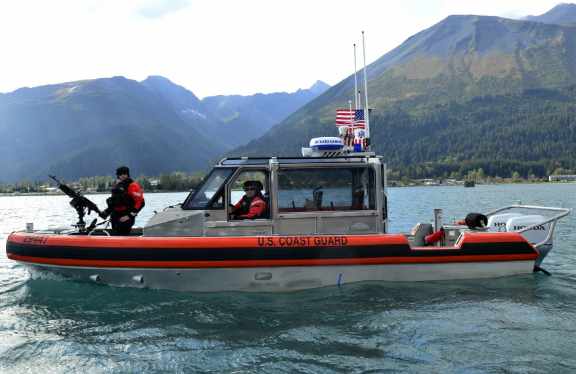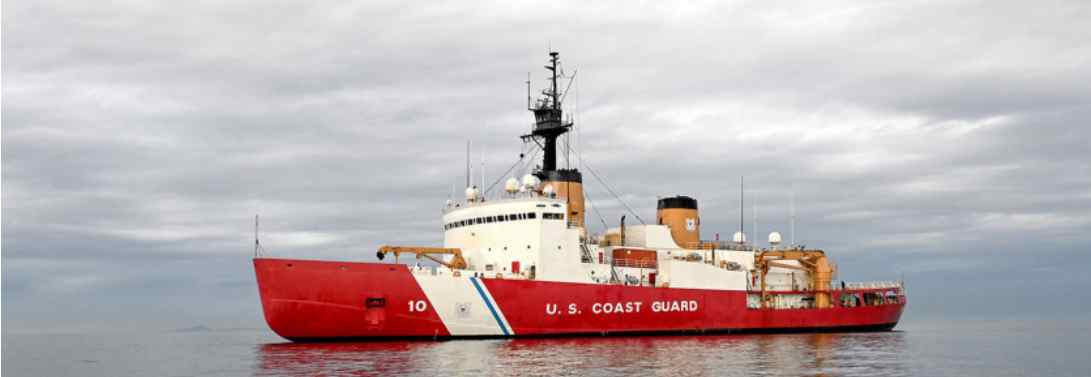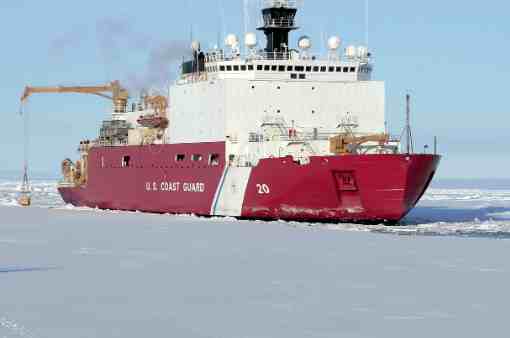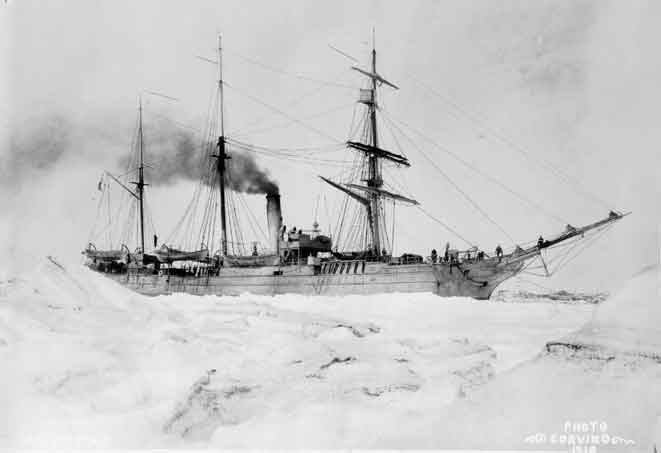
It was on this day, 132 years ago, on May 3rd, 1885, that the iconic Revenue Cutter Bear was turned over to the Treasury Department by the U.S. Navy for use for patrolling Alaskan and Arctic waters.
As Alaska’s Revenue Cutter, it would perform in that capacity for 41 years, a patrol in Alaska that has never been surpassed.
The Bear had its beginnings as a sealer that operated off of the coast of Newfoundland for a period of 10 years.
Following that, the Bear was one of three vessels that assisted in the search of the Greely party. That party, led by First Lieutenant Adolphus Washington Greely, U.S. Army, had set out to create observation stations in the Arctic, but met with a disastrous end and became stranded.
Less than two months into the search for the missing expedition, the USS Bear came across the remnants of starved men, the remaining survivors of the party. Many of the men, who subsisted on sled leather, rock moss, and what small game that they could find, had either died or gone mad.
Shortly after the rescue of those pitiful souls, the Navy determined that the vessel was unfit for duty in that branch of the service, and so was turned over to the Treasury Department for use as a Cutter.
Her first skipper as a cutter was a Captain named A. A. Fengar. But, her most famous skipper would come next. In 1885, “Hell Roaring”‘ Mike Healy took over command and would captain the vessel for nine years. He was the first African-American to command a U.S. government vessel.
Under Healy’s command, the Bear served as a court, law enforcement and for crime prevention. It also carried months of mail that had been stored in Seattle through the winter months, along with government officials and supplies north to Alaska. It also took soundings for charting in Alaska as part of its duties as well as provided a surgeon for Alaska Natives, miners and whalers. On its return trip south after patrolling for the summer months, it would take federal prisoners and other ilk not wanted in Alaska back to the Lower 48.
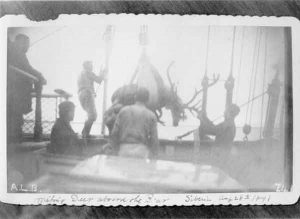
Under Healy’s command, the steam and sail-powered Bear traveled to Siberia and collected and transported a herd of Reindeer back to Alaska in an attempt to end the famine suffered by natives and provide clothing from the hides.
That Reindeer herd brought back would serve well years later, when the Bear’s new skipper, Captain Francis Tuttle arrived in Seattle at summer’s end, only to be ordered to back to Alaska to attempt to rescue eight whaling vessels and their crew numbering 275 stranded on the ice near Point Barrow.
By December 14th, 1897, the cutter was back in Alaska and off-shore of Cape Nome in thick ice and could not progress further. Before turning back from the ice, Tuttle put off an overland party tasked with trekking the 1,600 miles to Point Barrow where the whalers were stranded.
As the rescue party worked its way north, they collected up approximately 450 reindeer and herded them before them for three and a half months to the stranded and starving men in the Arctic. The rescue party and food in the form of Reindeer were a welcome sight for the starving men.
By 1917 the USS Bear was back in the service of the Navy for the duration of WWI, but, remained as an Alaska patrol vessel.
In 1929, after 44 years of service, the cutter was decommissioned and turned over to the city of Oakland as a Maritime Museum. During that time as a museum, the Bear was used for the filming of Jack London’s “Sea Wolf” as the Macedonia.[xyz-ihs snippet=”adsense-body-ad”]But, seemingly, the end of sea life for the cutter, was in fact, not true, she had more to play out on the ocean.
As Admiral Richard E. Byrd was preparing for his second Antarctic expedition, he bought the Bear from the museum for $1,050 and had the ship crewed with volunteers and sailed to Boston for a re-fit. It completed the expedition under Lieutenant Robert A. J. English in 1934.
By 1939, Byrd once again tapped the Bear for another expedition. In preparation, the cutter had her steam engine removed, and it was replaced with a diesel engine and its auxiliaries were electrified. It completed that Antarctic expedition as well, and by 1941, was back in Boston.
With the commencement of WWII, the vessel was assigned to the Greenland patrol, and there took part in the capture of the Norwegian trawler Buskoe, a vessel that Germany had outfitted to spy on and report on Allied ship movements, and supply secret Axis weather stations.
By 1944, the Bear was taken off of the active list and turned over for sale. Four years later, a steamship company, owned by Frank M. Shaw, bought the vessel for $5,199, intending to re-fit her back into a sealing vessel. Shaw re-named her the Arctic Bear. But, before the work could be completed, the price of seal oil and hides dropped out and work was halted.
The ship laid idle for a long period of time, before a Pennsylvania man, Mr. Alfred M. Johnson, bought the vessel in 1962, intending to turn it into a commercial museum and restaurant near Philadelphia. But, the next year, in 1963, as the Bear was being towed from Nova Scotia to Pennsylvania, one of the ship’s masts collapsed in a storm and punctured the hull, the ship foundered and sank 90 miles south of Nova Scotia.
The Bear is one of the only ships to serve in both polar regions, and during its 89 years on the oceans, served under the flags of the United Kingdom, Canada and the United states. 47 of those years, the Bear served in the United States Revenue Cutter Service. [xyz-ihs snippet=”Adsense-responsive”]


